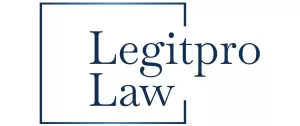- within Technology topic(s)
- in Europe
- with readers working within the Law Firm industries
- within Technology topic(s)
- in Europe
- in Europe
- in Europe
- in Europe
- in Europe
- with readers working within the Automotive, Utilities and Law Firm industries
- within Technology, Energy and Natural Resources, Government and Public Sector topic(s)
- with Senior Company Executives and HR
Introduction
India's digital economy is on the verge of a significant turning point. Following the remarkable triumph of the Unified Payments Interface (UPI) in making payments accessible to all, the government and the Reserve Bank of India (RBI) are gearing up to achieve similar success in the credit sector with the Unified Lending Interface (ULI). Designed as a Digital Public Infrastructure (DPI), ULI aims to eliminate the barriers associated with conventional credit delivery by utilizing real-time data verification, standardized APIs, and a plug-and-play framework for lenders.1
This represents a fundamental shift that carries profound consequences for financial inclusion, data governance, consumer protection, and legal risk management. This article delves into the legal and strategic dimensions of ULI, assisting business leaders in proactively aligning their compliance and operations with India's developing credit landscape.
Legal Implication and Recommendations
1. Data Governance: ULI functions within the domain of regulated personal and financial information, leveraging government-held datasets such as income tax returns, GST submissions, utility payments, and Aadhaar-linked authentication services. While this access significantly enhances underwriting efficiency, it concurrently raises intricate legal concerns regarding data privacy, ownership, and informed consent. The foremost challenge lies in ensuring that ULI adheres fully to the Digital Personal Data Protection Act, 2023 (DPDPA), particularly concerning its principles of purpose limitation, data minimization, and user consent.
Furthermore, ULI is likely to collaborate with India's advancing Account Aggregator framework and the Open Credit Enablement Network (OCEN), each subject to its own technical and legal criteria. It is essential to harmonize these frameworks to prevent jurisdictional conflicts and regulatory uncertainty.2
Strategic Recommendation: It is crucial to identify and delineate data fiduciary relationships throughout the ULI ecosystem, clarifying the roles of data controllers, processors, and intermediaries. Mechanisms for capturing consent should be multilayered, digitally traceable, and revocable. Companies ought to implement privacy-by-design frameworks, perform regular Data Protection Impact Assessments (DPIAs), and incorporate audit trails for API usage. Legal teams must also prepare for real-time compliance oversight from regulators like Ministry of Electronics and Information Technology and RBI, ensuring that internal privacy protocols are aligned accordingly.
2. Liability Distribution in Instances of Breach or Fraud3: The magnitude and intricacy of ULI amplify systemic weaknesses across the credit lifecycle. As sensitive borrower information is shared across various nodes including governmental agencies, third-party APIs, and lender interfaces the chances of data discrepancies, unauthorized access, identity theft, cyber intrusions, and algorithmic inaccuracies in credit assessments significantly increases. In these situations, the issue of assignable liability whether it lies with state data custodians, private technology providers, or financial institutions remains legally ambiguous. At present, there is no unified statute or regulatory body that delineates clear liability boundaries for failures in digital credit infrastructure. This absence of legal clarity may lead to lengthy litigation or regulatory examination following an incident. Furthermore, ULI's connection with other systems such as Account Aggregators, OCEN, and Aadhaar creates a multi-jurisdictional compliance challenge, further complicating the attribution of risk.
Strategic Recommendation: A multi-tier indemnity framework which will distinctly outline liability thresholds for each component within the ULI ecosystem. Contracts ought to incorporate fault-based and strict liability triggers, comprehensive Service Level Agreements, and protocols for immediate breach notifications. API licensing agreements should contain explicit stipulations regarding data integrity, uptime responsibilities, and mechanisms for dispute resolution. Additionally, organizations should consider cyber risk insurance specifically designed for DPI-connected operations and conduct audits of third-party risks to reduce liability exposure throughout the value chain.
3. Competitive Neutrality and Antitrust Risk4: Similar to UPI, ULI must guarantee open and non-discriminatory access for all eligible participants within the lending ecosystem, regardless of their size or market share. Any form of preferential or exclusive access be it through technical limitations, pricing benefits, or privileged data streams could raise issues under Section 4 of the Competition Act, 2002, which addresses the abuse of dominant market positions. Moreover, collusive behaviour among prominent lenders to establish closed user groups may also attract examination under Section 3(Anti-Competitive Agreements). Considering that ULI is a Digital Public Infrastructure co-developed with governmental bodies, concerns regarding public utility treatment and the essential facilities doctrine may emerge, particularly if fintechs' or regional lenders are excluded from access or interoperability.
Strategic Recommendation: Boards must ensure that ULI participation guidelines, data sharing protocols, and API access terms must be fair, reasonable, and non-discriminatory. Legal departments should keep compliance records, perform regular antitrust assessments, and create clear criteria for onboarding partners. Furthermore, businesses should be ready for proactive discussions with the Competition Commission of India (CCI) to address potential market power issues and prevent unintentional enforcement risks.
How ULI will Impact Businesses?
1. Fintech and NBFCs: The emergence of ULI is anticipated to markedly alter the framework for fintech startups and NBFCs, promoting real-time underwriting, flexible risk-adjusted pricing, and context-specific lending experiences. Through streamlined access to borrower information, even entities with minimal physical infrastructure can provide tailored credit solutions via applications, e-commerce platforms, or integrated finance collaborations. Consumers with limited credit histories (for instance, gig economy participants and first-time borrowers) will attain credit visibility through data channels generated from GST, EPFO, and utility payments. Nevertheless, the efficacy of these financial products will be contingent upon regulatory harmonization and the implementation of comprehensive risk analytics.5
2. Traditional Banks: For established banking institutions, the advent of ULI will necessitate a comprehensive revaluation of credit delivery paradigms. The demand for speed and flexibility will pose a challenge to their traditional focus on rigorous compliance, manual validation procedures, and cautious decision-making frameworks. Financial institutions will be required to modernize outdated core banking infrastructures to facilitate API-driven lending and reassess their vendor management strategies. Collaborations with fintech enterprises or the adoption of white-labelled ULI-empowered offerings may surface as a provisional strategy, however, operational risks and data governance will continue to be paramount issues of concern.
3. Corporate Borrowers and SMEs: ULI presents an exceptional opportunity for more efficient access to working capital, quicker invoice discounting, and credit assessments grounded in verified cash flows. SMEs that have previously encountered documentation challenges can now be assessed utilizing digital footprints. Nonetheless, corporations need to scrutinize ULI-associated credit for clarity in pricing, potential algorithmic bias, and risks related to dependency. Additionally, businesses should prepare for an increase in automated credit triggers connected to tax submissions or legal requirements, which could influence cash flow management and financial strategy.6
4. Credit Bureaus and Alternate Data Providers: ULI has the potential to challenge the traditional credit bureaus' dominance by facilitating multi-source, transaction-level credit profiling that captures real-time cash flows and behavioural trends. By utilizing data from tax returns, provident fund contributions, and utility bills, lenders can create more dynamic and inclusive borrower profiles, thereby diminishing reliance on outdated credit scoring methodologies. This transformation opens the door for a new wave of alternative scoring agencies, consent management systems, and fraud analytics providers. It also intensifies competition among established credit bureaus, compelling them to innovate and collaborate within the ULI ecosystem. Business models must transition from merely providing static scores to implementing orchestrated data flows, predictive analytics, and integrated AI insights-as-a-service that adhere to regulatory standards concerning consent, accountability, and transparency.7
5. Legal Technology and Regulatory Technology Providers: The emergence of ULI will greatly enhance opportunities for legal-tech and reg-tech companies, as conventional compliance methods prove inadequate against automated, API-driven lending systems. Financial institutions will have to adjust to a new compliance environment that requires instantaneous data validation, seamless regulatory integration, and embedded legal reasoning throughout digital interactions.
Legal-tech firms have the potential to lead in creating platforms for dynamic contract creation and execution, API-based legal due diligence, and intelligent clause enforcement. These solutions will assist lenders in automating repetitive documentation processes, overseeing digital consent systems, and incorporating legal rights and responsibilities directly into lending workflows.
On the regulatory technology front, there is an increasing demand for real-time audit dashboards, cross-platform regulatory mapping, and machine-readable compliance protocols. As the DPDPA and RBI's digital lending regulations come into sharper focus, companies must demonstrate regulatory compliance in a dynamic manner rather than retrospectively. Tools for incident attribution, automation of breach notifications, and compliance sandbox simulations will also see increased adoption. This implies integrating legal oversight directly into the digital framework from product design to API integration, thus transforming the legal role from merely a gatekeeper to an enabler of embedded governance.8
Risk Management Checklist for Digital Compliance and Operations9
| Risk Area | Key Questions |
|---|---|
| Data Access Compliance | Are we in compliance with relevant data protection regulations and industry standards like the RBI Master Directions concerning digital lending? |
| Contractual Liability | Whether API usage and platform agreements have clearly defined clauses such as indemnities, limitations of liability or data breach? |
| Consent Architecture | Are users able to give specific, changeable consent and is there a clear record of it for accountability? |
| Tech Vendor Risk | Is a proper due diligence is being
conducted on UL integrators and API stack vendors? |
| Regulatory Readiness | Is the lending product sandbox tested and aligned with RBI's digital norms? |
Strategic Considerations for Businesses
- Ensure that ULI integrations are subject to rigorous auditing by both regulatory bodies and internal compliance teams. Develop comprehensive documentation and strong internal controls to guarantee the traceability of decisions executed through APIs and algorithmic lending models.
- Evaluate the proprietorship of intellectual property, entitlements for white labeling, stipulations for data residency, and responsibilities pertaining to sandbox engagement in each third-party integration. Ensure that API licensing is consistent with the organization's internal risk tolerance and legal standards.
- ULI's ecosystem requires the integration of legal and compliance oversight within the cycles of product design and technology deployment. Boards ought to establish cross-functional governance committees to monitor innovations in lending.
- Prioritize the engagement of technology partners that exhibit substantial experience in DPI and a thorough knowledge of lending frameworks. Evaluate their compliance status, preparedness for incident response, adherence to data localization requirements, and their history of developing scalable, interoperable systems. Assess their capability to collaboratively design customized lending solutions that cater to the regulatory and operational specifics of your sector, which include tailored consent processes, borrower risk assessment, and robust API security measures. Choose partners who offer not only technical APIs but also the capacity for strategic co-innovation, ongoing support, and current documentation that aligns with the latest regulatory bodies' standards.
Conclusion
ULI represents more than just India's forthcoming digital advancement. It offers Indian enterprises a chance to surpass global counterparts in data-centric, inclusive financial solutions. For General Counsels and Chief Executive Officers, the necessity is twofold: synchronize internal controls with ULI's compliance framework and strategically position themselves within the platform ahead of their competitors. Just as UPI transformed the landscape of payments, ULI has the potential to revolutionize the ways in which businesses lend, borrow, and expand. The legal preparedness established today may dictate your market responsiveness in the future.
Footnotes
1. Online, E. (2025, July 24). From collateral to clicks: RBI bulletin maps India's digital credit revolution. The Economic Times. https://economictimes.indiatimes.com/news/economy/indicators/from-collateral-to-clicks-rbi-bulletin-maps-indias-digital-credit-revolution/articleshow/122871279.cms?from=mdr
2. ibid
3. ibid
4. ibid
5. P, S. (2024, September 2). How ULI, OCEN will redefine credit access to small companies, rural borrowers. The Economic Times. https://economictimes.indiatimes.com/tech/tech-bytes/all-you-need-to-know-about-rbis-unified-lending-interface/articleshow/112973229.cms?from=mdr
6. ibid
7. P, S. (2024, September 2). How ULI, OCEN will redefine credit access to small companies, rural borrowers. The Economic Times. https://economictimes.indiatimes.com/tech/tech-bytes/all-you-need-to-know-about-rbis-unified-lending-interface/articleshow/112973229.cms?from=mdr
8. ibid
9. ibid
The content of this article is intended to provide a general guide to the subject matter. Specialist advice should be sought about your specific circumstances.


